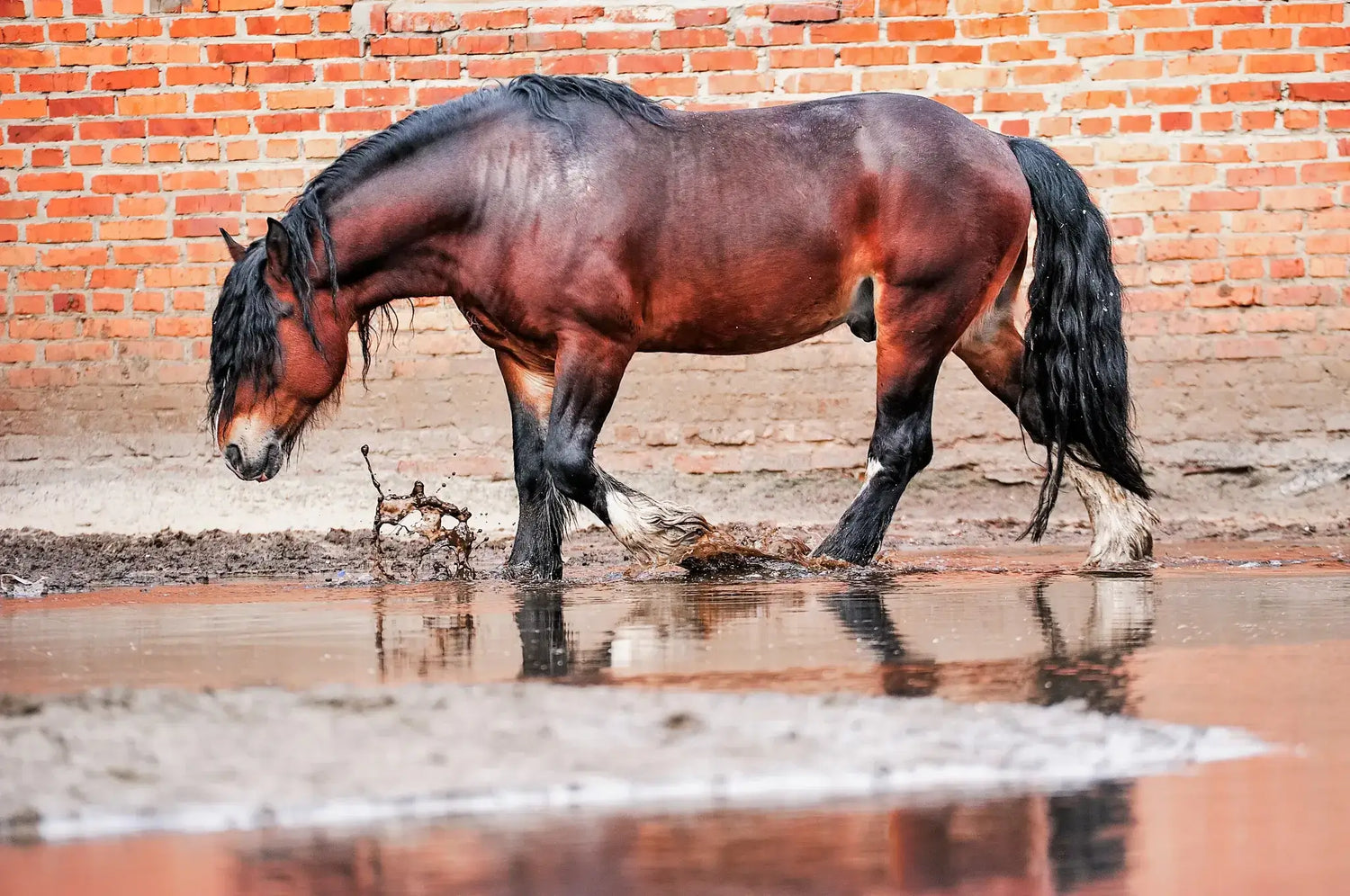With spring finally here, the last of the snow is melting and spring showers are common. While it's exciting to know that soon grass will be growing and flowers will be blooming, all of that precipitation often means we'll also be dealing with flooding. Flooded stalls and barns are a huge headache, but these tips can help you to deal with and even prevent them this spring.
How to Deal with Flooded Stalls and Barns This Spring
If you discover flooded stalls in your barn, these tips can help you to quickly fix the situation.
Start with a Sump Pump
You'll need to start by removing the water from the stalls. A Shop Vac can do this quickly, but it requires some significant lifting as you carry the water out of the barn and dump the vacuum.
A sump pump is an easier option that's equally effective. Many sump pumps now hook up to a common garden hose. You can set up the pump and leave it, and it will pump the water out of the stall and out of your barn.
When removing the water, be sure to dump it downhill of the barn so it doesn't contribute to the flooding problem.
Leave Stalls Empty
Once you've removed the water from your stalls, try to leave them empty if possible so they can thoroughly dry out. When you do bed them down again, using a pelleted bedding that fluffs up as it gets wet can help to absorb any remaining moisture.
Route Water Away from the Barn
While removing the water from your stalls is important, it's also essential to address the cause of the flooding, or the problem will keep happening. You may need to hand dig channels to route the water runoff away from your barn. If you have a puddle pooling outside of your barn, you can use a sump pump to drain it.
Make a Plan for the Future
While you might want to immediately fix your flooded stalls, take a minute to look around your barn and see just where the water's coming from. Is it resulting because your barn is located downhill, and water is running down into it? Is it a result of the banks you created when plowing snow this winter? Looking for the exact causes of the flooding can help you to prevent it in the future.
Installing French drains or curtain drains around your barn can help to direct the water away from the barn. While this can be a labor-intensive process, it's worth the time investment, especially if it prevents future flooded stalls. A French drain has a gradual slope. It's covered with gravel, but the pipe is perforated, so it will capture runoff water and carry it to the destination you've chosen. These drains are capable of holding large amounts of water, so they're ideal for situations where you have significant snowmelt or heavy rain.
However, if the area you are needing drainage is within your horse's paddock or stall run, a French drain may not be the best option. Heavy hoof traffic can cause crushing and clogging and it's very difficult to repair or replace. We reccomend using supported open drainage features within your horse areas which can be accomplished with Lighthoof, our flexible equine mud management panels. Check out some photos of how this works in our post on Horse Paddock Drainage Myths.
In addition to directing water away from the barn, you may want to build up your stall bases. Raising your stalls up an inch or two so they're at least level with the ground outside of your barn can help to reduce the chance of them flooding.
You can use Lighthoof to build up your stall base as well because it adds 3" of height in addition to providing erosion control. Check out this post on Horse Nation with before and after photos where someone did exactly that to save her barn that was prone to dangerous and damaging flooding.
With these tips, you can make soggy bedding and wet feet and hooves a thing of the past. While some of these solutions will cost some money, you'll also save money in wasted bedding that you have to throw out when your stalls flood. Which of these tips will you be trying in your barn this spring?





Leave a comment
This site is protected by hCaptcha and the hCaptcha Privacy Policy and Terms of Service apply.